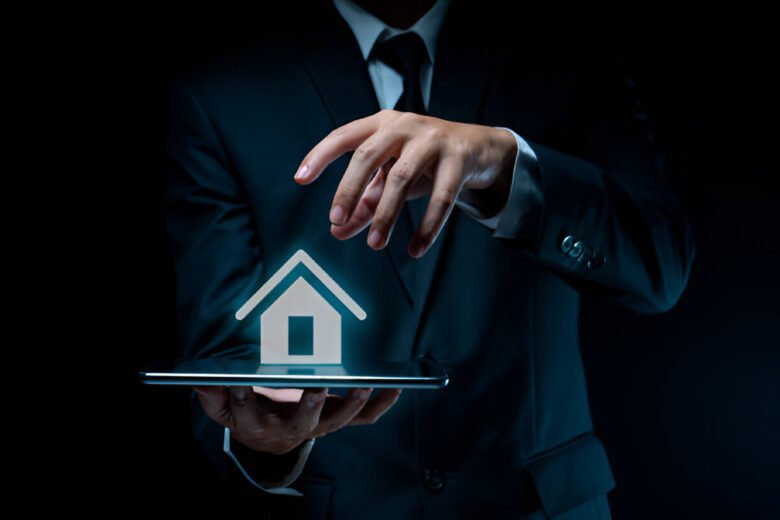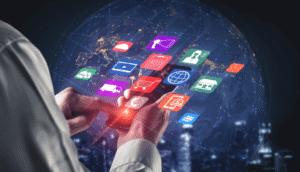The technology has become a part of nearly all aspects of our lives, changing the way we work, communicate, relax, and maintain our health. These innovations, from smartphones that keep us in touch to smart home appliances that anticipate our needs, have made life easier and more efficient than ever. Modern technology is not only sophisticated but also seamlessly integrated into our daily lives. It often solves problems that we weren’t aware we had. Understanding how everyday technology enhances our personal and professional lives can help us make better decisions about which tools to use and how to best utilize them.
Communication and Connectivity
Smartphones have revolutionized the way we communicate with family and friends, as well as colleagues. FaceTime and Zoom, video calling platforms that eliminate geographical barriers to face-to-face communication, have become popular. These tools are invaluable for remote workers, as they allow teams to work as efficiently as if everyone were in the same office. Instant messaging apps allow for quick and efficient communication without the need to use formal emailing or phone calls. Social media platforms allow us to maintain relationships with our extended networks of professional and personal contacts. They also create opportunities that would not have been possible otherwise. Cloud-based communication software allows you to access important files and messages from anywhere.
Home Automation and Convenience
Smart home technology is transforming our homes into environments that respond to our schedules and preferences. Smart thermostats can learn our preferences for temperature and automatically adjust heating and cooling to maintain comfort while reducing energy costs. Voice assistants like Alexa and Google Home allow users to control lights, music, and appliances with simple commands. Smart lighting systems mimic natural light patterns to support our circadian rhythms, thereby improving sleep quality and promoting better health. Homeowners can monitor their properties remotely with automated security cameras and doorbells. Smart appliances such as refrigerators, which track the grocery list, and washing machines, which optimize water use, make household management more efficient.
Entertainment and Leisure
Streaming services are revolutionizing entertainment, allowing access to a vast library of movies, TV series, music, and podcasts. Smart TVs, streaming devices, and other connected devices eliminate the need for cable subscriptions. They also offer personalized recommendations of content based on viewing preferences. Mobile gaming, virtual-reality experiences, and cloud-based gaming services have evolved to allow for high-quality gameplay on various devices. Audiobooks and digital books have made literature more accessible. People can now read while on the go, working out, or multitasking. Music streaming platforms offer instant access to millions of songs. They create personalized playlists and introduce listeners to new musicians based on their tastes.
Productivity and Efficiency
Productivity software streamlines both professional and personal task management. Cloud-based document editors allow multiple people to work on projects together in real time, eliminating the need for email exchanges or version control problems. Project management software helps teams to organize tasks, track their progress, and meet deadlines. Calendar apps sync between devices and send reminders, helping users manage their time better. Digital note-taking applications instantly capture, organize, and search information. Automation tools automate repetitive tasks such as bill payment, email responses, and data entry. This allows you to spend more time on meaningful work.
Health and Well-being
Wearable fitness trackers measure steps, heart rate, and sleep patterns to encourage more active lifestyles. They also provide valuable information for healthcare providers. Apps that promote mindfulness and meditation can help manage stress and improve mental well-being. Telemedicine platforms make healthcare more accessible by allowing patients the opportunity to consult doctors at home and reduce the need for office visits. Sleep tracking technology can help identify sleep disorders and provide insights to improve rest quality. Mental health apps offer resources to manage anxiety, track moods, and get professional counseling.
Technology for Better Living
Technology continues to improve, making our homes more intelligent, our jobs more efficient, and our lives more interconnected. We must carefully select technologies that align with our needs and goals to maximize these benefits. Successful technology integration is more than just adopting the latest gadgets or apps. It involves identifying problems in our daily lives and finding digital solutions to them. These technologies will continue to change the way we work, live, and interact with others as they become more sophisticated.
FAQs
1. How do I know which technologies to invest in for my home, and why?
Start by identifying the biggest frustrations you face each day or the most time-consuming tasks. Instead of buying gadgets just for the sake of novelty, look for technologies that solve these problems. You should also consider your budget, technical ability, and how the technology will integrate with your other devices.
2. Is the privacy and security of smart home devices assured?
It is important to update the firmware of your smart home device regularly, to use strong passwords, and to review privacy settings. Consider brands when purchasing devices, and look for those that have local processing capabilities rather than cloud functionality.
3. Can technology help improve the work-life balance of employees?
The technology can be used to automate routine tasks, enable flexible work arrangements, and improve communication efficiency. It’s also important to establish boundaries, such as designated times for phone-free use and separating work and personal devices when possible.
4. What is the best way to keep up with new technology?
Consider trying out free versions or basic features before purchasing premium features. Instead of following the latest trends, focus on technologies that address real problems.
5. How do I help my elderly family members to benefit from technology?
Begin with easy-to-use devices and provide patients hands-on instruction. Choose devices specifically designed for seniors and opt for technologies that provide exceptional customer service. Take into account technological solutions that address their needs, such as family communication or health monitoring.




